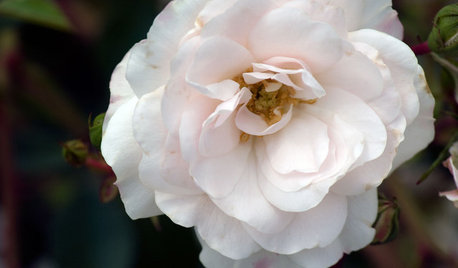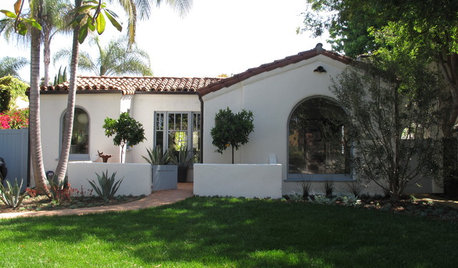using pure vermiculite for rooting
boizeau
14 years ago
Related Stories

MODERN ARCHITECTURERoots of Style: International Style Celebrates Pure Form
Using technology and materials of the time, International style is always current. See its expression in these 16 homes around the world
Full Story
GARDENING GUIDES12 Gardens That Are Pure Visual Delights
Lovely to look at, delightful to behold, these gardens are designed with the sole purpose of being a treat for the eyes
Full Story
HOUZZ TOURSMy Houzz: Pure Simplicity Reigns in Salt Lake City
Minimalist style puts dynamic architecture and hillside views front and center in a renovated Utah home
Full Story
GARDENING GUIDES5 Favorite White Roses for a Purely Beautiful Garden
How does your garden glow? With roses that look like light and smell divine
Full Story
ARCHITECTURERoots of Style: American Farmhouses Pay Tribute to Regional Traditions
With simple forms and details that honor their locales, farmhouse architecture transcends time
Full Story
ARCHITECTURERoots of Style: Where Did Your House Get Its Look?
Explore the role of architectural fashions in current designs through 5 home styles that bridge past and present
Full Story
ARCHITECTURERoots of Style: Many Cultures Make Their Marks on Mediterranean Design
If you live in California, Florida or certain other parts of the U.S., your architecture may show distinct cultural influences
Full Story
DECORATING GUIDES8 Modern Uses for Classically Beautiful Linen
Possibly the ultimate neutral, linen is a natural fabric choice for rooms both elegant and casual
Full Story
LANDSCAPE DESIGNThe 7 Best Plant Types for Creating Privacy and How to Use Them
Follow these tips for using different kinds of plants as living privacy screens
Full Story
GREEN BUILDINGSunlight Used Right: Modern Home Designs That Harness Solar Power
Embracing passive heating principles through their architecture, siting and more, these homes save energy without skimping on warmth
Full StoryMore Discussions






tapla (mid-Michigan, USDA z5b-6a)
fatnsassytexan
Related Professionals
Simpsonville Landscape Architects & Landscape Designers · Bridgetown Landscape Architects & Landscape Designers · Dunwoody Landscape Contractors · Fort Payne Landscape Contractors · Golden Gate Landscape Contractors · Goodlettsville Landscape Contractors · Lemoore Landscape Contractors · North Haven Landscape Contractors · Soddy Daisy Landscape Contractors · Silver Firs Landscape Contractors · Montgomery County Decks, Patios & Outdoor Enclosures · Salem Decks, Patios & Outdoor Enclosures · Westford Decks, Patios & Outdoor Enclosures · Olive Branch Fence Contractors · Oregon City Fence Contractorsdrivewayfarmer
tapla (mid-Michigan, USDA z5b-6a)
ottawan_z5a
paully22
danab_z9_la
tapla (mid-Michigan, USDA z5b-6a)
satellitehead
danab_z9_la
tapla (mid-Michigan, USDA z5b-6a)
drivewayfarmer
tapla (mid-Michigan, USDA z5b-6a)
drivewayfarmer
tapla (mid-Michigan, USDA z5b-6a)
jimmieldavis
svanessa
drivewayfarmer
tapla (mid-Michigan, USDA z5b-6a)
danab_z9_la
tapla (mid-Michigan, USDA z5b-6a)
danab_z9_la
tandrew31
danab_z9_la
tapla (mid-Michigan, USDA z5b-6a)
danab_z9_la
ottawan_z5a
gorgi
gorgi
danab_z9_la
tapla (mid-Michigan, USDA z5b-6a)
gorgi
danab_z9_la
satellitehead
danab_z9_la
gorgi
danab_z9_la
radovan
xgrndpounder
satellitehead
danab_z9_la
fignut
ottawan_z5a
giants_2007
tapla (mid-Michigan, USDA z5b-6a)
satellitehead
radovan
tapla (mid-Michigan, USDA z5b-6a)
xgrndpounder
danab_z9_la